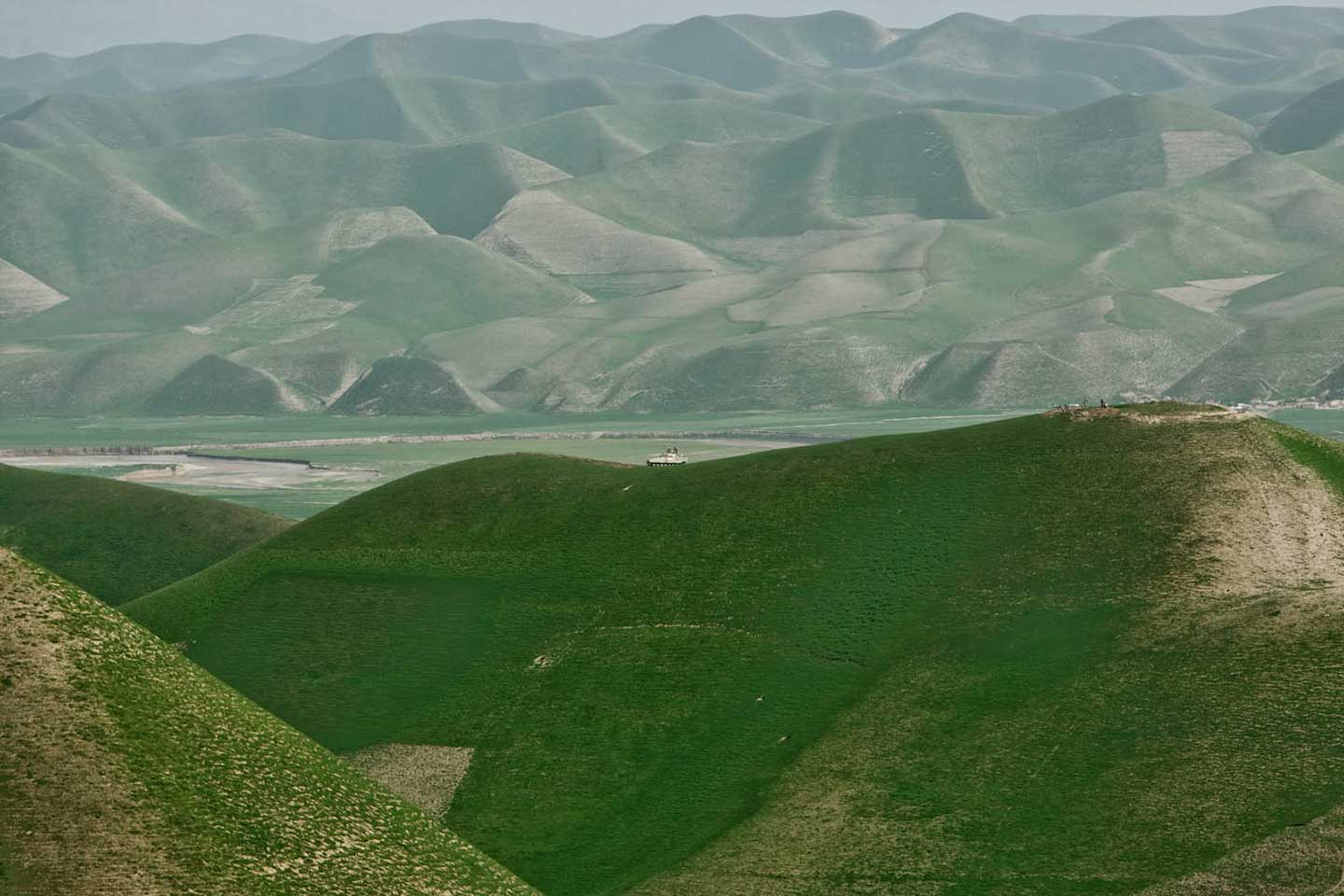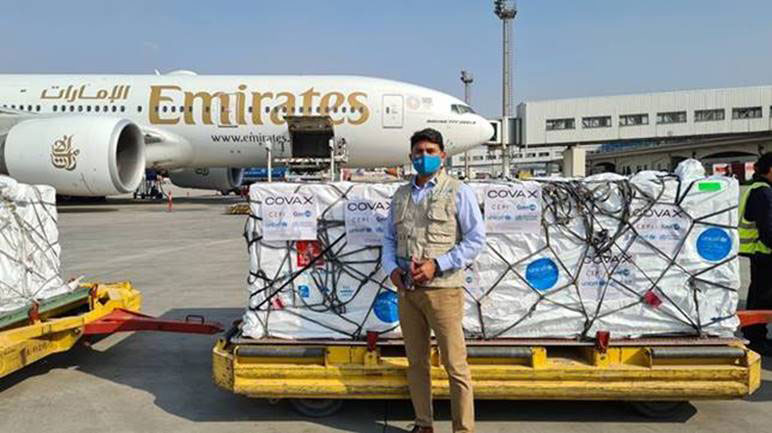Resourceful Optimism: Fighting COVID-19 in Afghanistan
The pandemic has strained most countries’ health systems. Afghanistan has faced more hurdles than most.
- 20 April 2021
- 7 min read
- by Maya Prabhu

When a consignment of COVID-19 vaccines was seized by the Taliban in northern Faryab province in March, it wasn’t travelling in a refrigerated van, nor in any kind of specialist or logo-stamped vehicle that might risk advertising the nature of its cargo. It’s a lesson that vaccination experts at the Afghan Ministry of Public Health learned a long time ago: better keep a low profile.
When COVID-19 reached Afghanistan it was arriving in a uniquely vulnerable public health setting, with only 9.4 skilled health workers – and just 1.9 doctors - per 10,000 patients.
“We are using public transport to deliver our vaccines,” Dr Dastagger Nazary, Director of Afghanistan’s Expanded Programme on Immunization (EPI), told VaccinesWork on a call from Kabul one recent evening. Usually, that means goods trucks laden with wheat, rice, oils – the kind of quotidian necessities which can camouflage two or three cold boxes bound for a provincial health centre. The boxes are RCW25s: chunky, bubblegum-blue long-range vaccine transport containers. In Afghan weather conditions, an RCW25 can be counted on to keep vials at between two to eight degrees Celsius – the temperature required by the Oxford-AstraZeneca vaccine – for a week, Dr Nazary says, and you can travel from Kabul to anywhere in the country in three or four days. He checks himself, reconsiders: in winter, factoring in road closures, it can take as long as five, he says.

Credit: PRT Meymaneh
It’s a roll-out strategy that Ministry officials know works. In meetings earlier this year, senior leaders of Afghanistan’s government raised doubts about the likelihood that COVID-19 vaccines could be safely delivered to all of Afghanistan’s 34 provinces, pointing out that the road between Kabul and Kandahar had been blocked for some 17 days at that point. Dr Nazary reassured them: “I said: right now we have all 13 antigens of our routine immunisation programme in more than 2,220 health facilities across 407 districts – and almost no stock-outs.” But Dr Nazary knows from experience that even proven plans aren’t fail-safe, “in a context like Afghanistan, where active war is going on, where there are bomb blasts in big cities, and many challenges.”
When the news came in that the vaccines had been seized in Faryab, the EPI’s first concern was for the cold chain: if the vials didn’t make it into the health centre refrigerators before the RCW25’s cold-life expired, the doses risked spoiling. Provincial EPI management opened negotiations with the Taliban. “With the involvement of religious and community leaders of that district, we were allowed to replace our ice packs to keep the vaccine safe within required temperatures,” Dr Nazary says. The clock reset. Talks could progress to the matter of the release of vaccines from Taliban custody. Within a week of capture, the doses had been handed back, and made it safely to their destination.
Have you read?
The struggle against COVID-19 is global, but in some parts of the world, it’s a steeper hill to climb than in others. In Afghanistan, the fact that the shipment held up in Faryab were the only COVID-19 vaccines intercepted during the first phase of Afghanistan’s roll-out counted as good news. That COVID-19 vaccines have now been distributed to every province is a triumph.
But it’s also only a start. “There will be big challenges ahead, in terms of introducing a new vaccine,” says Ricard Lacort, Gavi’s Senior Country Manager for Afghanistan, “as there have been big challenges in the past.”
When COVID-19 reached Afghanistan – in Herat, when on 24 February 2020 an Afghan national recently returning from Iran was confirmed positive – it was arriving in a uniquely vulnerable public health setting. According to the World Health Organization, Afghanistan has only 9.4 skilled health workers – and just 1.9 doctors - per 10,000 patients. For reasons of rugged geography and pervasive insecurity, an estimated 15 percent of Afghanistan is considered a “white area” – a zone beyond the reach of health services.Two thirds of the country’s population are daily wage labourers without the social and financial safety nets required in order to isolate, estimates Dr Najibullah Safi, who manages WHO’s Health System Development program in Afghanistan, “so it was quite challenging and almost impossible to impose movement restriction and lockdown.” At the pandemic’s beginning, there were no laboratories in Afghanistan equipped to diagnose COVID-19, says Dr Safi. Test-and-trace containment strategies were therefore likewise unfeasible.
Official data suggest that Afghanistan has seen 57,534 cases of COVID-19, and 2,533 deaths. People on the ground say the real toll is significantly higher. “Definitely it cannot reflect the true burden of disease,” Dr Safi told VaccinesWork. “Our elders were counting that almost 70 people died only from our village. There are 40,000 villages across the country.” A prevalence survey conducted in mid-2020 suggested 10 million had been infected, Dr Safi says.
The virus tore through Safi’s family in mid-2020. His own condition was grave for weeks; his younger brother, a dentist, died after a three-day struggle in the ICU. “I failed; we all failed. We must do much better to save lives,” wrote Dr Safi on Facebook, heartbroken and regretful in the immediate aftermath of his loss.
But even while the pandemic has upended the lives of the bereaved and occupied the stretched attention of medics and public health specialists, for many, COVID-19 has registered less forcefully. In certain quarters – particularly among those people living amid conflict, says Dr Nazary – the pandemic has been understood less as an historic cataclysm, and more as one more looming threat in a roster of many. Gavi’s Ricard Lacort explains it in stark terms: “the population of Afghanistan has more things to worry about than only COVID-19.”
It’s a perspective that has allowed for a sort of resourceful optimism that might seem inverted in other parts of the world. The word “opportunity” comes up more often than it might elsewhere. Lacort, for instance, says, “I’m a little bit naïve: what if we could take advantage of the COVID-19 epidemic as an opportunity?” He offers a hypothetical: what if a traditionally vaccination-opposed faction among Afghanistan’s anti-government elements (AGEs), as groups like the Taliban and ISIS are collectively termed, was willing to accept COVID-19 vaccination – could the Ministry and its implementation partners then also deliver measles shots, or polio vaccines, or necessary nutrition to previously hard-to-serve populations?
The Ministry of Health’s Dr Nazary echoes him: “Although COVID-19 has been a challenge, I more find it an opportunity for the health sector.” He explains, “you won’t believe me – but we were able to increase our ICU beds and isolation ward beds – in 2020-beginning, there were 130. But we have raised that to 1,300.” With new streams of emergency funding available, a network of 26 laboratories has been built in 25 provinces. Tertiary hospitals have CT scan machines for the first time, and, Dr Nazary adds, the national media have been more receptive to public health messaging than he can remember.
And, as the first carefully packaged crates of COVID-19 vaccines arrived in Afghanistan from India – one consignment donated by the Indian government, and another from COVAX – the Ministry of Public Health and its partners were recruiting and training 2,000 new vaccinators. “It’s almost a 50 percent increase,” says WHO’s Dr Safi.

The 2,000 new vaccinators – dispersed country-wide in one thousand teams of two – were a necessary addition, Nazary says, to protect Afghanistan’s routine immunisation programme from pandemic strain. Despite massive health system gains over the past couple of decades, Afghanistan’s full immunisation rate for children has hovered in the 50% range for years. A pandemic-related disturbance to childhood vaccination had to be avoided.
At present, and for the immediate future, the new vaccinators are busy: the COVID-19 vaccination campaign is underway, and, after a somewhat sticky beginning marked by depressed demand, is gathering momentum. But in the future? If there is a COVID-19 vaccine stock-out at some point this year – a not-unlikely prospect given global demand – Dr Nazary spies an opportunity. The new cohort of vaccinators are fully-funded into next year – why not mobilise them? Why not send them to the white areas, or to health centres with overstretched staff? “The more vaccinators we have, the more people or children we could cover.”
More from Maya Prabhu
Recommended for you









